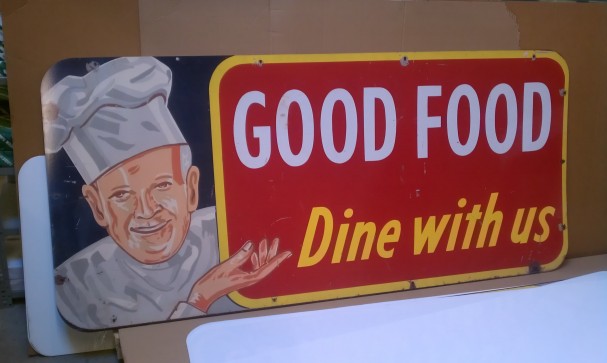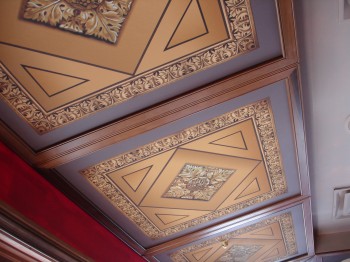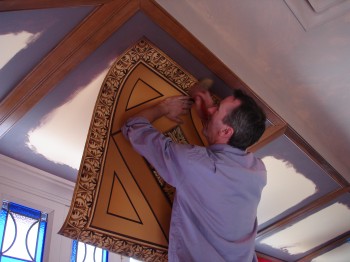When you boil it down to its essence, printing is just another way to solve a problem. The problem (and challenge is really the best word in this case) confronting Thomas Reprographics was reproducing about 90 somewhat distressed-looking antique signs for a restaurant chain that would look as original and authentic as possible.
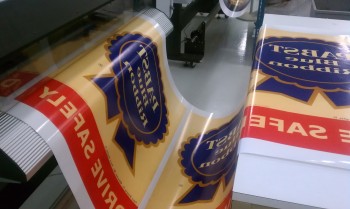
Andrew McConnell, strategic account executive for Thomas Reprographics’ Minneapolis Branch (the company is headquartered in Dallas), says the trick was finding a reproduction method and material that would hit the mark.
McConnell says the restaurant combs swap meets and antique shops and buys antique photos and signs that relate to their décor. Over the years Thomas Reprographics has scanned and saved these items in a database.
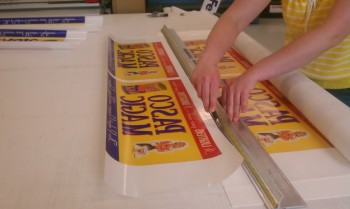
“When they open a restaurant they order their standard footprint of images,” explains McConnell. “Recently, they came in with a collection of old metal signs. We scanned them and were deciding how to reproduce them. In the past they’ve worked with sign painters, but that would have been hard to mass produce and send out to the restaurants as part of a kit. The first thought was to use a vinyl and adhere it to metal, but there’s a texture with that from the adhesive. It doesn’t look painted; it looks like a decal.”
Instead, they decided to test LexJet’s new Infinium, which is a clear print medium with filmless laminate and adhesive built into one conformable material. The idea was that a clear, conformable material would come closest to seamlessly replicating a hand-painted sign.
“Because you’re printing on the adhesive side and looking through the laminate side it really gives the impression of a painted or enameled sign,” says McConnell.
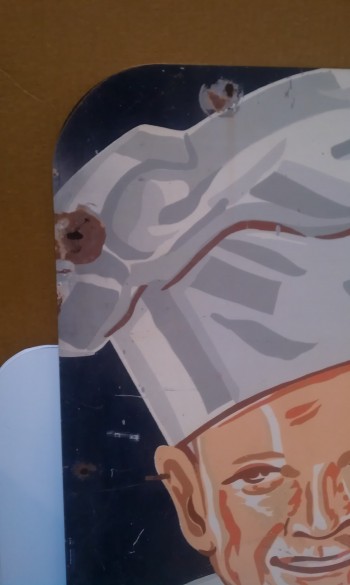
The customer was impressed with the test sign and gave the go-ahead for the roll-out of the antique sign program to its various locations across the country. Thomas Reprographics applied Infinium to about 90 white aluminum sign blanks cut to specification in various sizes and configurations (some with rounded corners and most with square edges) that ranged from about 8″ x 20″ to 36″ x 86″.
“We print the images on the Infinium with a small bleed, and then apply it to the aluminum with our laminator at 250 degrees. We’re using the bonding agent [Infinium Bond], apply it on the metal and let it dry for a day. Then we run the printed Infinium through the laminator,” explains McConnell. “The recommended temperature is 300 degrees, but running the laminator at 300 degrees for a big production run like this makes the laminator run way too hot. We ran it at the lower temperature and it seemed to work great. The one piece of advice I have is to be careful not to get the adhesive onto the rollers. You don’t want the material hanging over the edges too much, especially if you have something 80 or 90 inches long to run through. It takes some skill, but we’re lucky to have someone who’s really good using that machine.”
Thomas Reprographics printed the images on Infinium with its Epson Stylus Pro GS6000 low-solvent printer. “It turned out great. The colors reproduced on the Infinium with the GS6000 are perfect – bright and vibrant,” adds McConnell.
Now Thomas Reprographics has another tried and tested tool in its already extensive arsenal to meet the demands of its customer base – a conformable print medium that essentially becomes part of the material to which it is applied.

